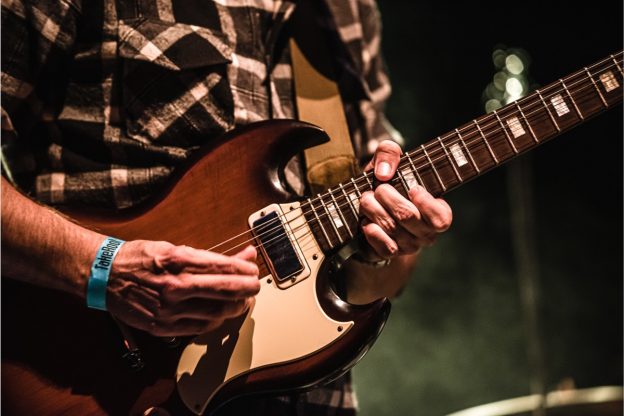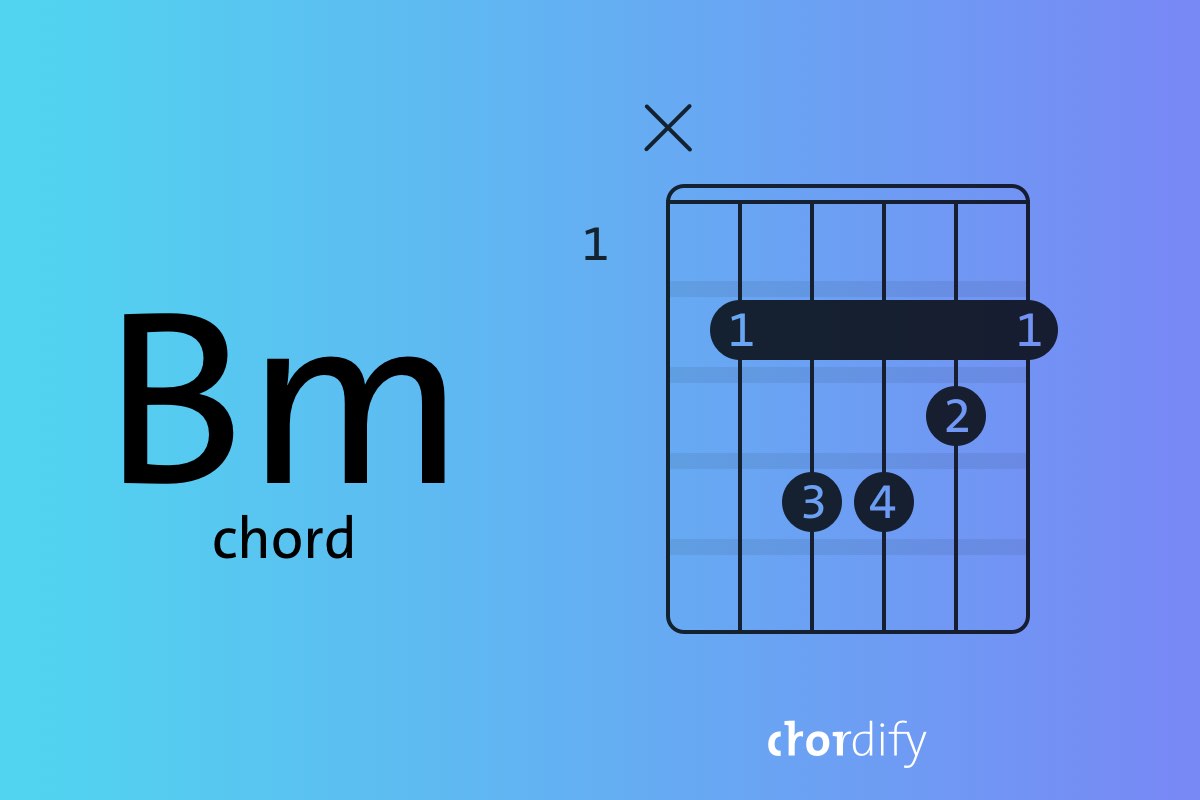This article is about the basic “open” guitar chords and their construction. In this blog post we’ll also navigate you to the specific articles dedicated to these open guitar chords. Let’s dive in!
Estimated reading time: 5 minutes
In this blog post on basic chord theory
Getting started
Before we get started, go and grab your guitar. It’s going to make things a lot easier to explain, and you’ll learn faster if you put theory into practice straightaway. But, if you’re reading this during working hours with no axe in sight, no worries. Just picture the guitar neck in your hand and you’ll be fine. All set? Let’s get this party started.
Three notes create a chord
Good things come in threes, or so they say. This definitely applies to chord theory. The minimum number of notes that form a chord is three, and it’s called a triad. Triads are very common chords that consist of three distinct notes: the root note and intervals of a third and a fifth above the root note. We have eight basic open triads (chords) on guitar. You’ll find all of them in this article. So, read on!

The moody third
What’s the difference between major and minor? Simply put, the difference is mood. Major triads are perceived as uplifting and positive, while minor triads sound a bit sad and melancholic. All these differences are caused by the third note of a chord, the moody third. For instance, in a C major the third note will be… let’s count together: C, D, E. Right! It’s the E.
Major- and minor intervals
So, the difference between major and minor chords is the interval created between the root note and the third note. These intervals are called major third interval and minor third interval. So, remember: the third note decides the mood of your chord.
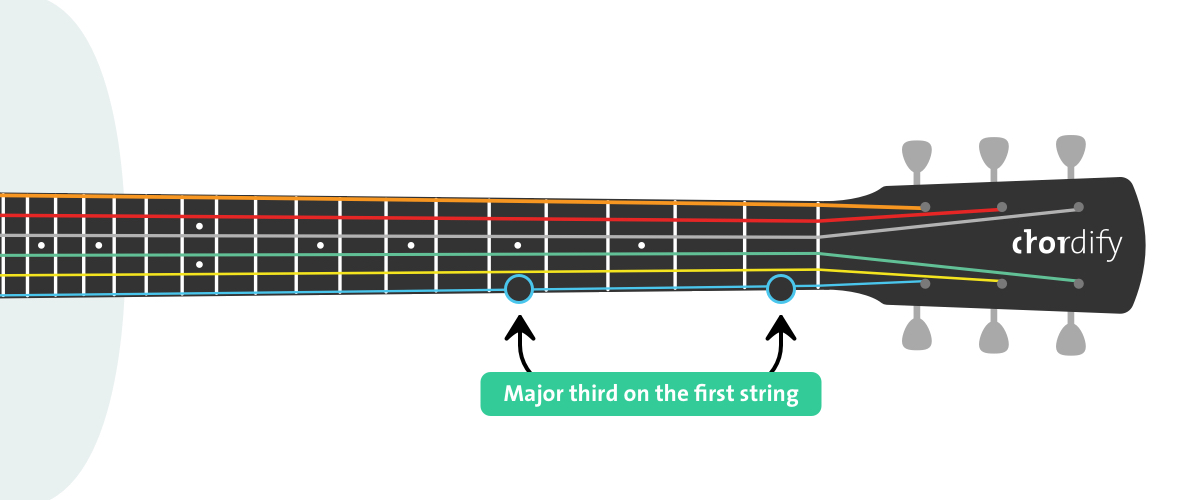

The music theory behind chord construction can get much more complicated. But, for now it’s important to remember that the difference between a major chord and a minor chord is just one fret away on the guitar fretboard. Because a minor third is one fret smaller than a major third. Below, we’ll look at how that works with the E major and E minor chords as an example.
E major vs E minor
Let’s put theory into practice by looking at the difference between an E major and an E minor chord. This will show us how a major third turns into a minor third and the other way around.
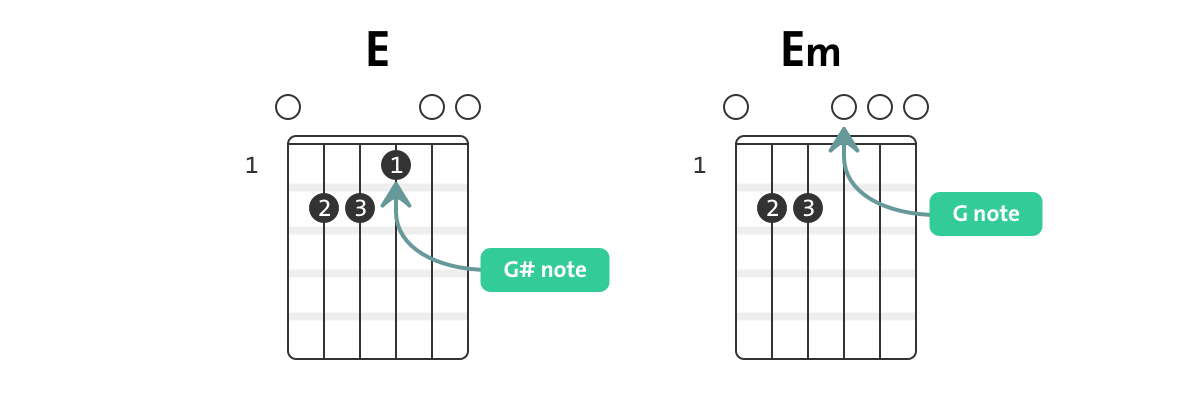
As you can see in the chord diagrams above, the difference between an E major and an E minor depends only on the third string. In the case of the E major chord the third string is pressed at the first fret, sounding the G# note. E and G# form the major third. In the case of the E minor chord the third string is played open, sounding the G note. E and G form the minor third.
In the basic open guitar triads (chords) we have three pairs of minor-major chords:
Remember that we mentioned that there are eight open triads on guitar? The other two basic open triads are:
To turn these two major chords into minor chords you need a bit more skills. We discuss these skills in our blog post about how to play barre chords. Check it out, it’s always worth expanding your knowledge. Now, let’s continue with the last part of the triad: the fifth.
The fifth is your muscle
Let’s talk about the fifth. Let’s take an example and find the fifth of the C chord. Again we’re going to do this by checking out the C scale: C, D, E, F, G. Here we are! So, the fifth of the C chord is G. The root note combined with the fifth creates a solid sound. Adding a fifth is like adding some muscle to the chord. The combination of these two notes is also known as a power chord. You can read more about power chords in our blog post about rock ‘n roll.
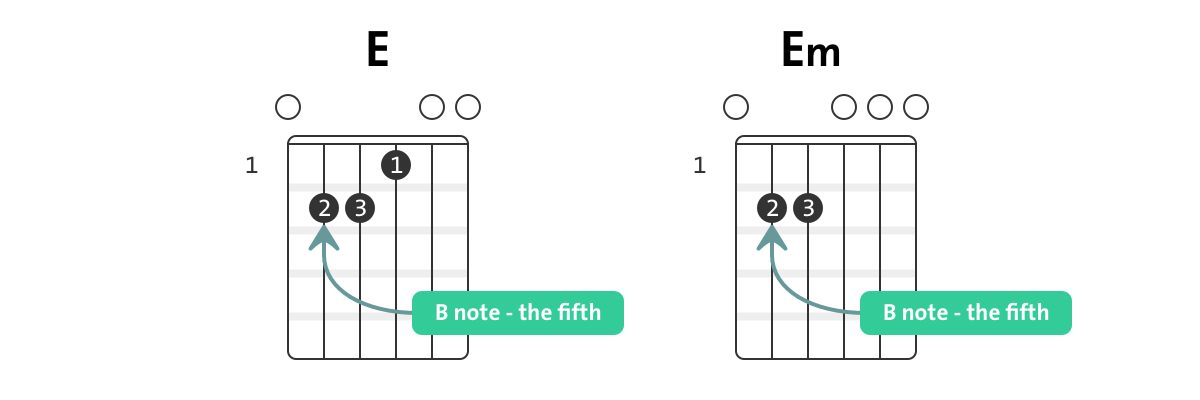
It’s worth mentioning that the fifth stays the same for the pair of major and minor chords. Let’s stick with the example of E major and E minor. They both have the same fifth: the B note (see the picture below).
Basic chord theory for guitar
So, now you know how basic triads are constructed. This is very important knowledge that you can use even when you’re already a skilled player. It will make you even more skilled as a matter of fact. If you want to dive deep into the rabbit hole of basic chords, just check out the blog posts on E major, E minor, A major, A minor, D major, D minor, C major, and G major. These will get you started.
Enjoy and happy jamming!
